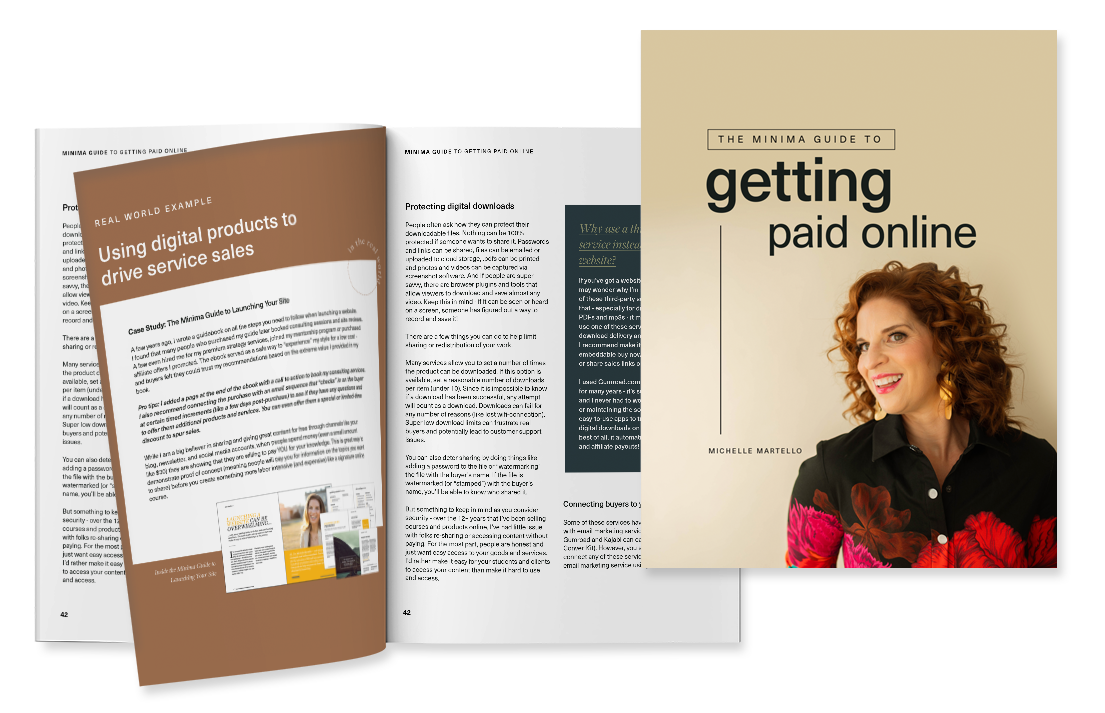With so many people claiming to be designers these days, how do you stand out?
When I started as an interactive designer in the early 2000s, you had to know how to code AND design unless you worked at a large agency or corporation. Now, the ease of systems like WordPress and ready-made templates allows almost anyone to call themselves a "web designer." And unlike the medical or legal profession, there are no major certifying organizations that control the quality of design and code that's out there.
It used to frustrate me that people would tack "web design" onto their coaching or consulting businesses. I would often get clients coming to me who had been through the ringer by these "consultants" and the sites would be coded so poorly we'd have to start over from scratch. I've heard so many horror stories of $3000-$12,000 sites that didn't work properly or were never delivered.
But then I learned to let go and realized that there will always be subpar work out there – but that I could be the one to change that customer's experience. You too can provide that premium experience.
What can you do to stand out from the rest?
Provide custom work
My design work is 100% custom – as with any designer, I am partial to a few aesthetic styles. From the start of my business, I didn't seek to create the flashiest sites – but to create beautiful AND functional sites that stood out from the sea of templates. Because I create unique designs, I constantly get inquires and referrals.
Customer service
I seek to serve my clients for the long-haul – not just for one project. Many of my clients have worked on multiple projects with me (several clients have created 4-5 sites together) and consider me "their" designer. In fact I'm currently remaking the very first WordPress site I created over 7 years ago to modernize it with the latest techniques.
Stay fresh + up to date
It is WORK to keep your designs fresh as well as keep up on the latest trends and technologies – but you owe it to yourself and your clients to constantly educate yourself. Take online courses, read design, marketing and technology blogs and seek out mentors. Make it a point to do something every week to stay up to date.
- I'm constantly educating myself on the latest trends and technologies (and testing what's really working for clients & visitors!)
- I'm always evaluating new tools and applications that can serve my clients
- I'm always looking for design inspiration online and offline
- I'm always testing new ideas, code and design on my own site (and on my test sites)
- I hire specialized consultants to give me pro guidance – what I can learn in an hour with a pro will save me months of research
Charge what you're worth
Early on in my career, I made it a point to never try to compete on price. The few times I deviated from my pricing structure, I ran into issues with payment. In one case, I had to chase a client for 2 years – and that was after I lowered my fee by a substantial percentage! Raise your prices and you'll deal with a different sort of clientele. Seriously.
Design for your clients, not the design sites
I know it can be tempting to drool over the sites and designs at Dribble, Behance and the portfolio sites – but unless you're actively seeking corporate work (or work from other designers), you likely won't be getting your next clients from those sites. Instead, focus on client-centered design – what can you do for them to make their sites successful AND convert their visitors into buyers. Your clients are the ones who will propel your success.
Show more what you want to do
This is the biggest thing I tell all of my clients – what kind of work do you want to do MORE of? THAT's what you should be showing in your portfolio and testimonial pages. Those projects that dragged on and you didn't get to see your vision created? Consider those the "bill-payers" and NOT what you want to show. And you don't have to show everything you've ever designed — show a broad range of your best work (and again, the work you want to do MORE of).

Leave a Reply